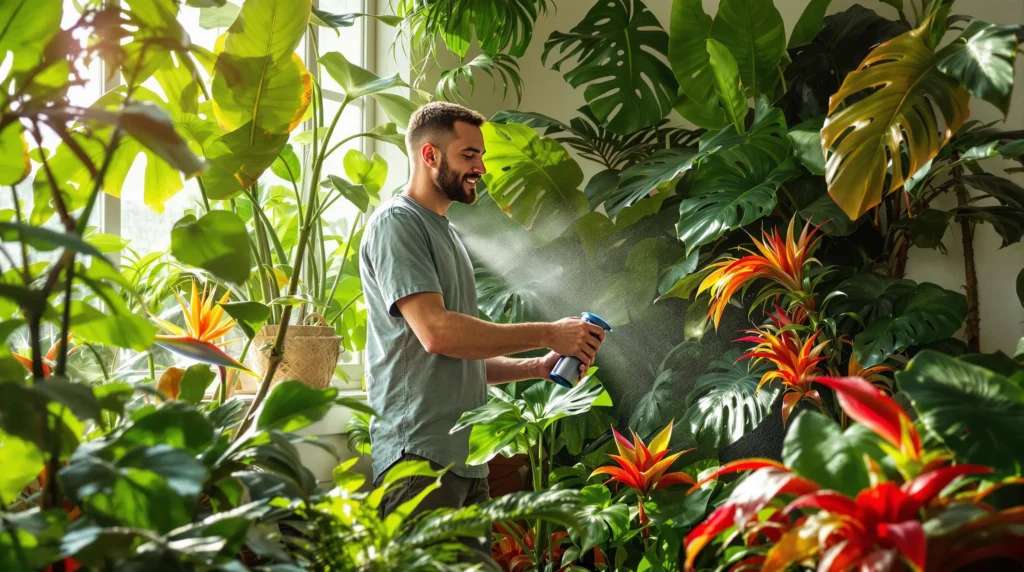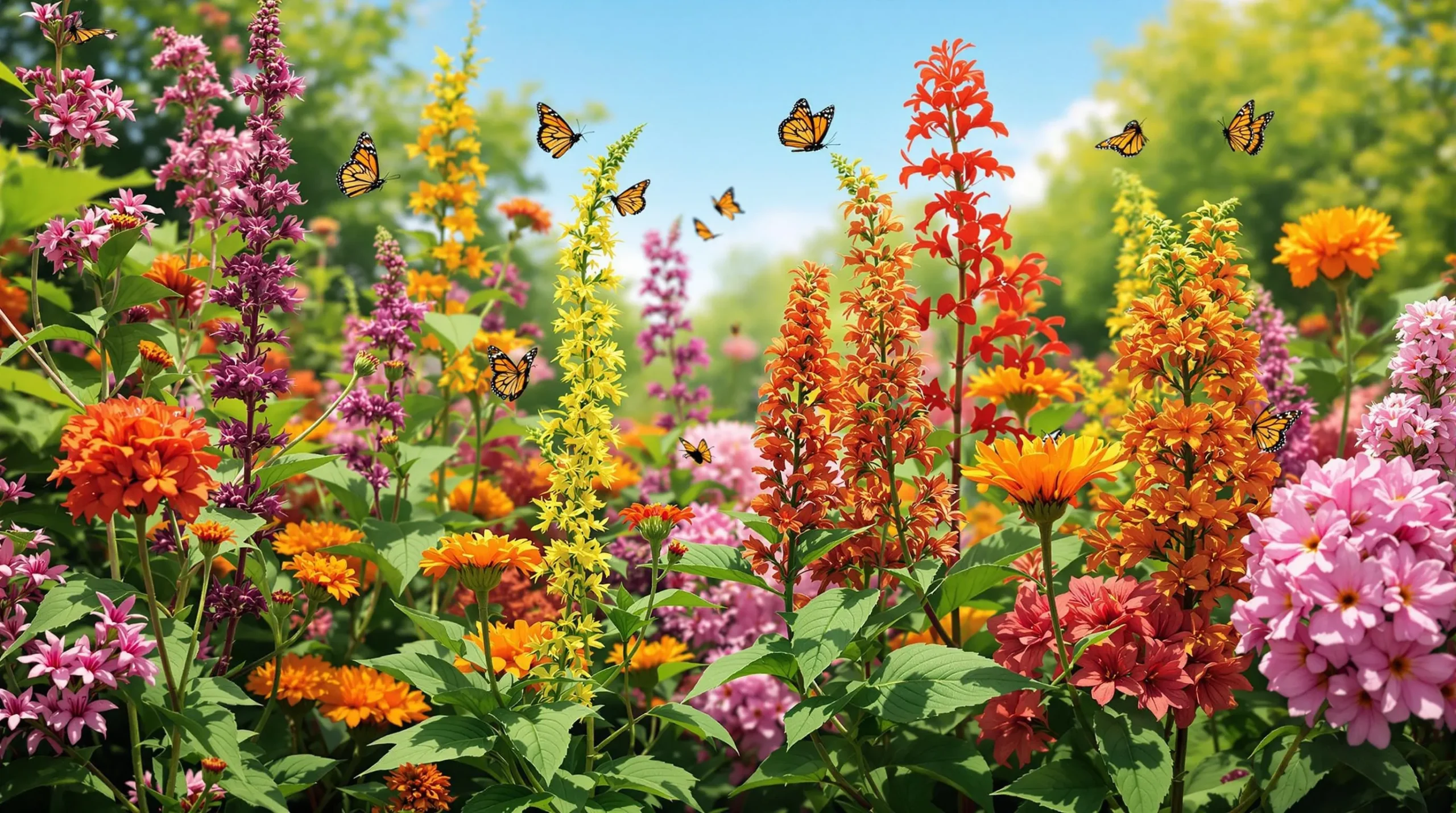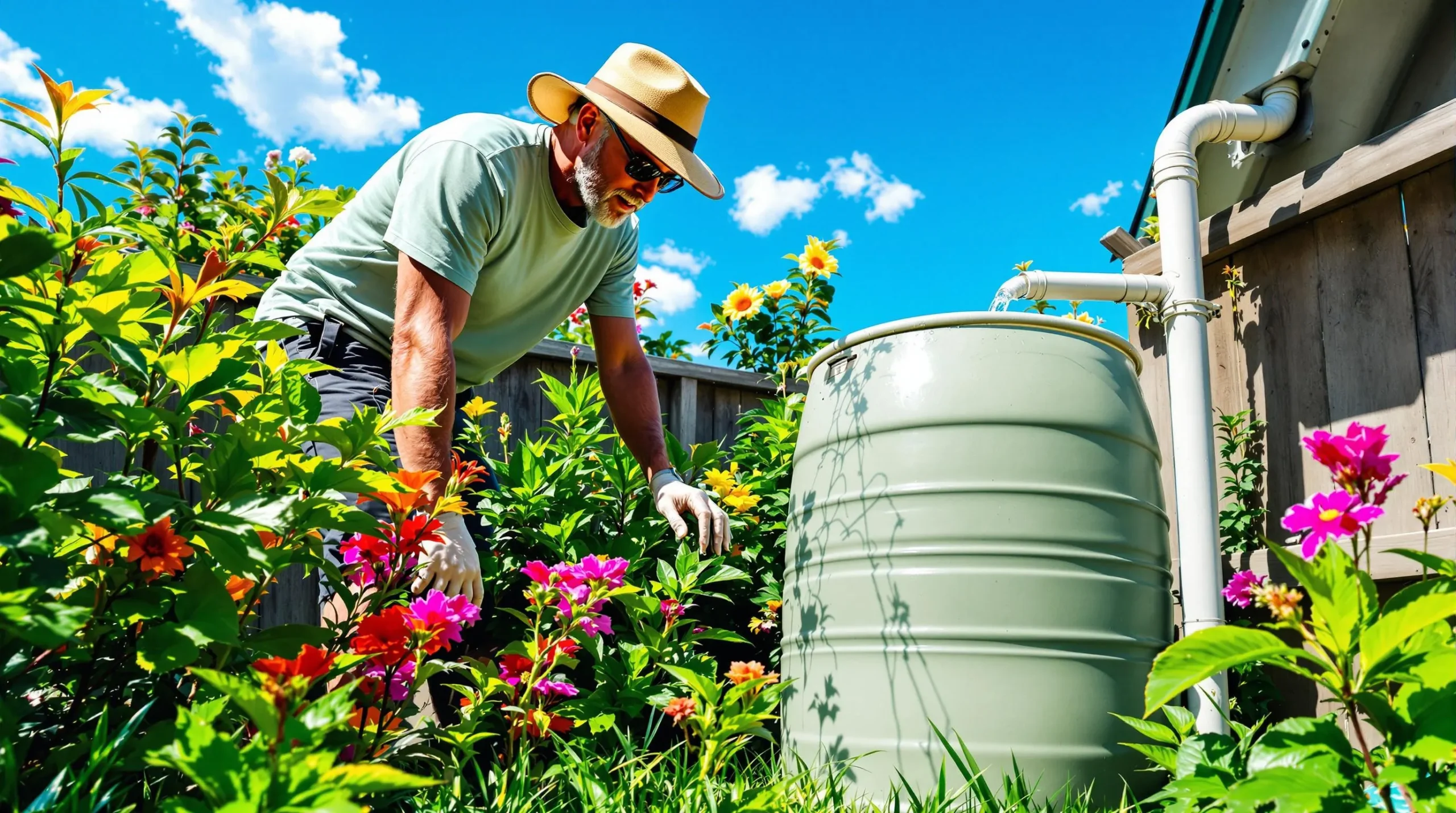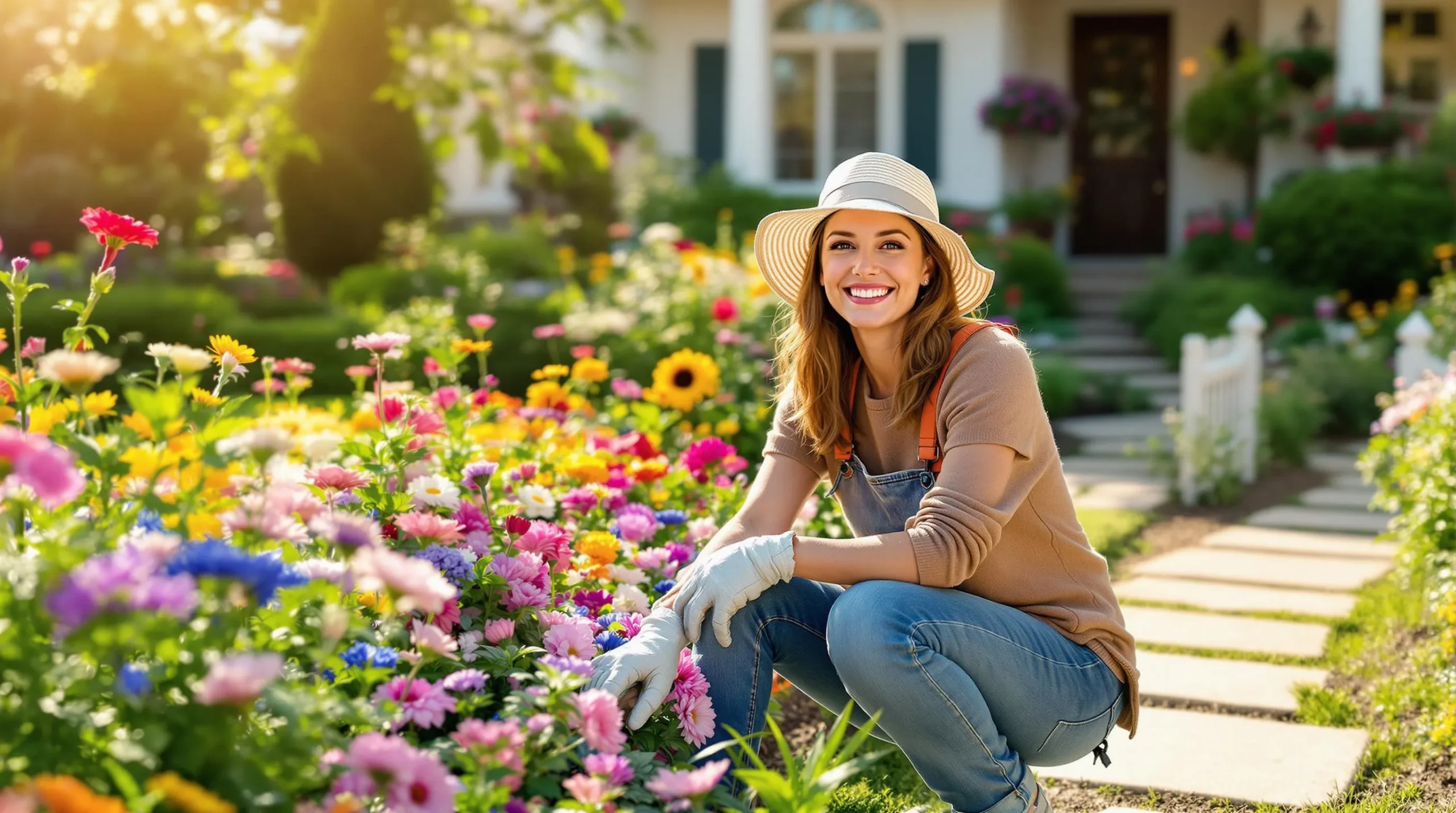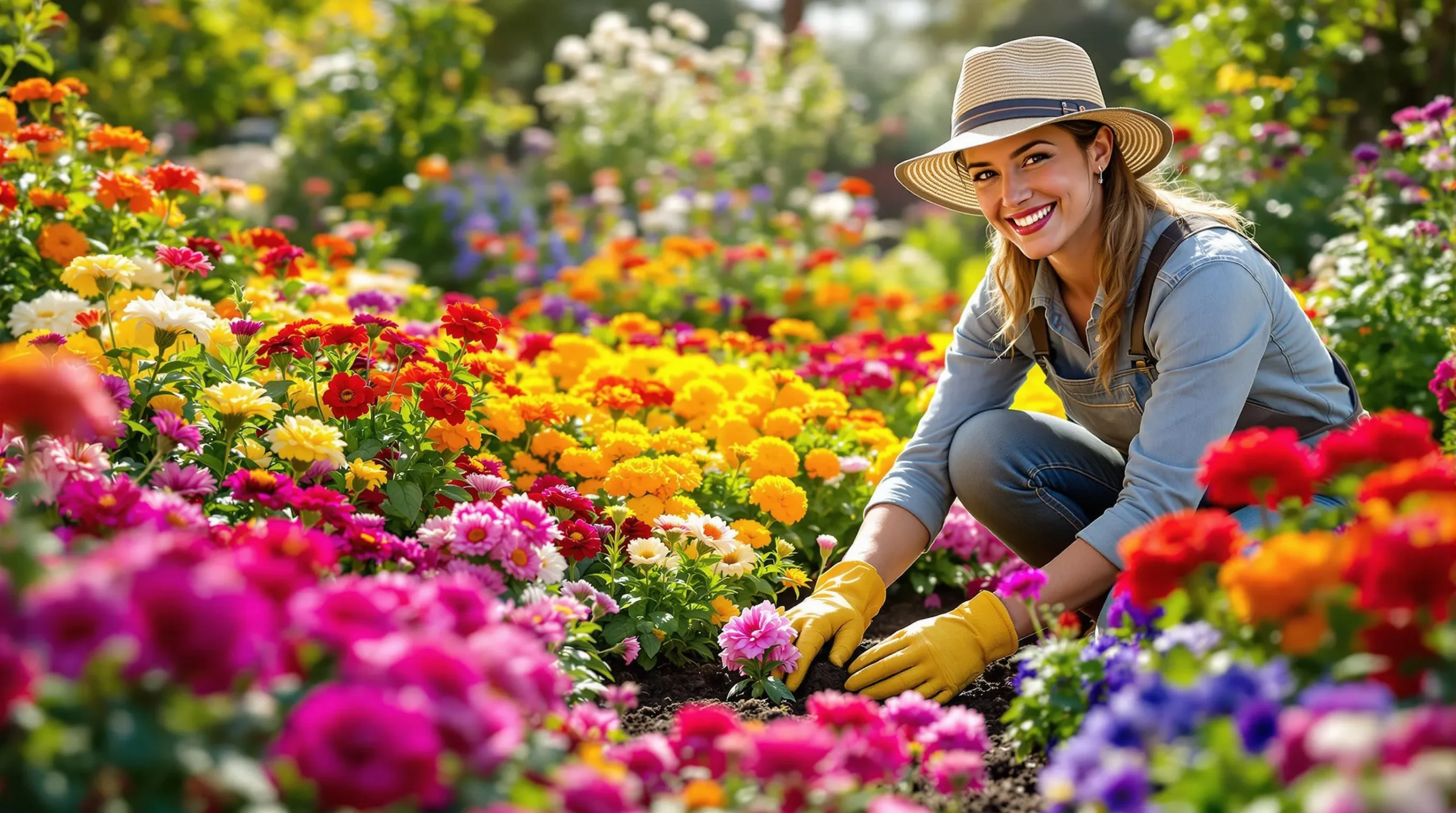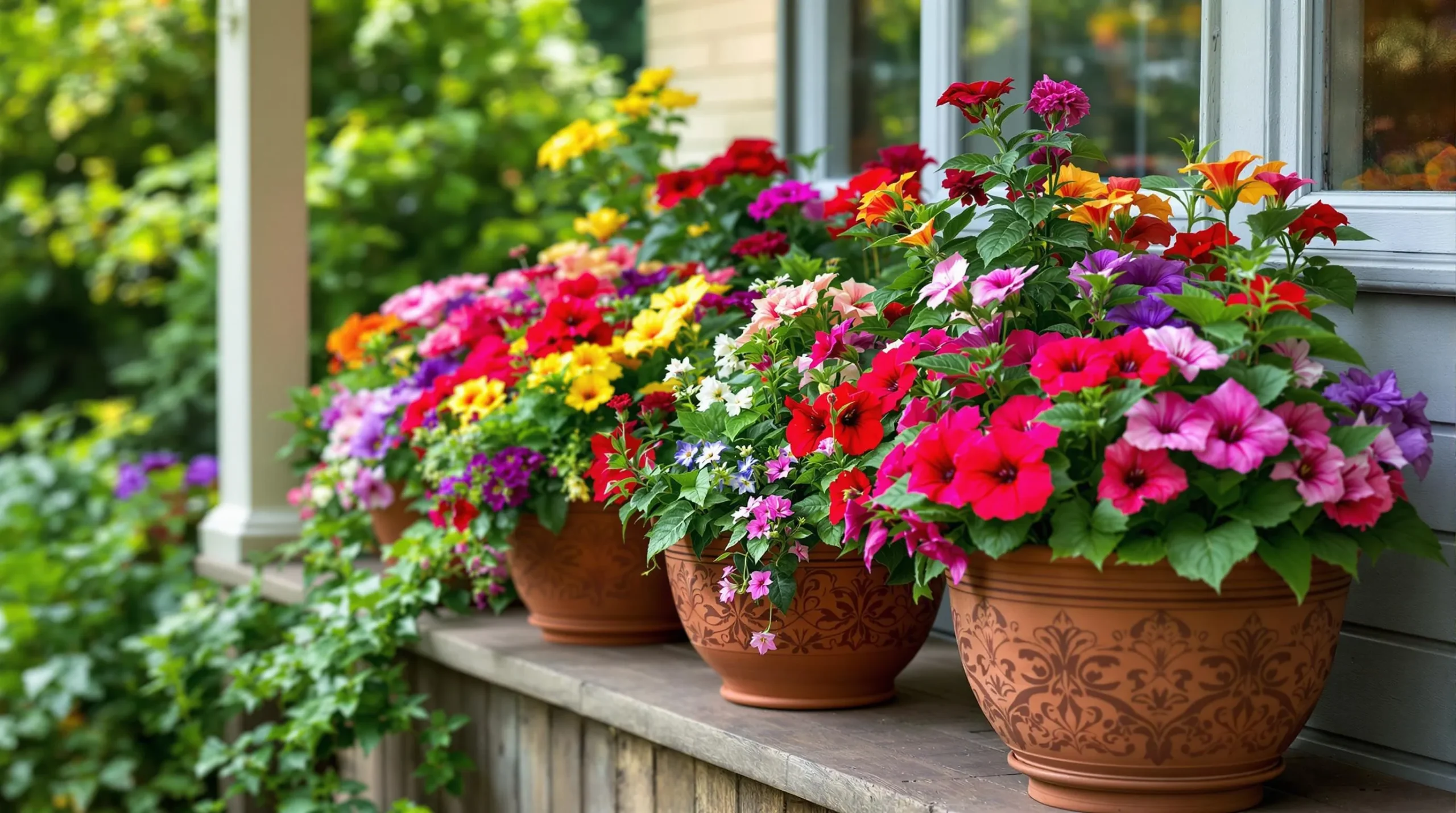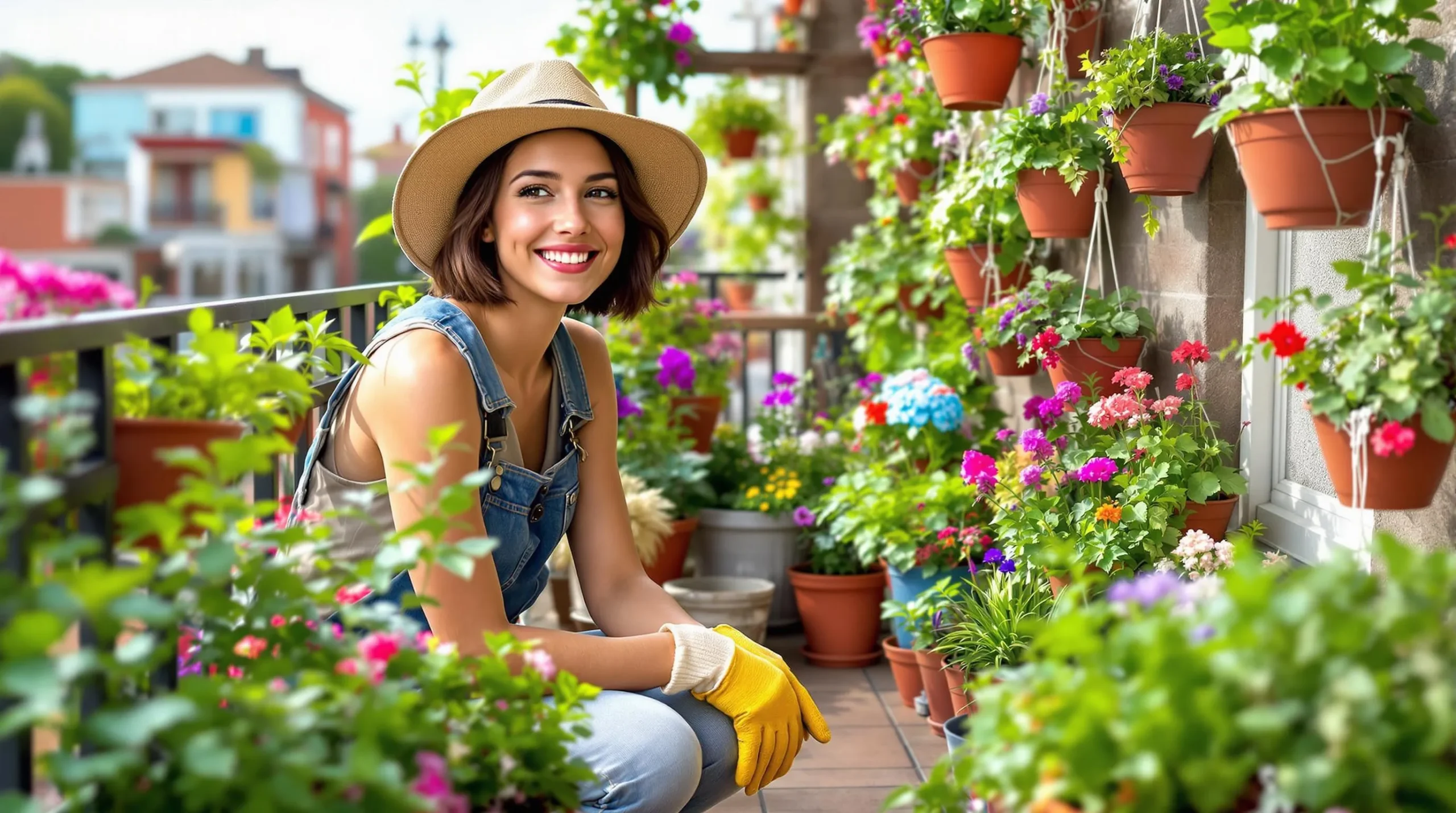10 Stunning Tropical Plants to Grow in Your Home
Transforming your home into a tropical paradise is easier than you might think with these stunning tropical plants. Each one brings unique characteristics that can enhance your indoor space while being surprisingly manageable for both novice and experienced plant parents.
- Bird of Paradise (Strelitzia nicolai) – This majestic plant features large, paddle-shaped leaves that create an instant tropical statement. Place it in bright, indirect light and water when the top inch of soil feels dry for optimal growth.
- Anthurium – Known for its glossy, heart-shaped flowers in vibrant reds, pinks, or whites, anthuriums bloom year-round with proper care. They prefer medium light and moderate watering, making them perfect for coffee tables or shelves.
- Calathea – With stunning patterned foliage that moves throughout the day, calatheas add visual interest to any room. They thrive in medium to low light and appreciate consistent humidity, ideal for bathrooms or kitchens.
- Philodendron – Available in climbing or non-climbing varieties with various leaf shapes, philodendrons are nearly indestructible. They adapt to most light conditions and only need watering when the soil dries out.
- Alocasia – Often called “elephant ears,” these dramatic plants feature arrow-shaped leaves with striking veins. Position in bright, indirect light and maintain consistent moisture without overwatering.
- Ficus Lyrata (Fiddle Leaf Fig) – This Instagram-favorite boasts large, violin-shaped leaves that create a bold vertical element. It prefers a stable environment with bright, filtered light and moderate watering.
- Bromeliad – These architectural plants offer colorful, long-lasting blooms in reds, oranges, or pinks. They require minimal care, needing only bright light and water in their central “cup” rather than soil.
- Orchid (Phalaenopsis) – The quintessential tropical flower, orchids produce elegant blooms that last for months. They need bright, indirect light and weekly watering, allowing them to dry completely between waterings.
- ZZ Plant (Zamioculcas zamiifolia) – With glossy, dark green leaves, ZZ plants bring tropical vibes with minimal maintenance. They tolerate low light and infrequent watering, perfect for busy plant owners.
- Parlor Palm (Chamaedorea elegans) – This classic tropical palm creates a lush, jungle feel while staying compact. It thrives in low to medium light and requires watering only when the top soil dries out, making it ideal for beginners.
Creating the Perfect Environment for Tropical Plants
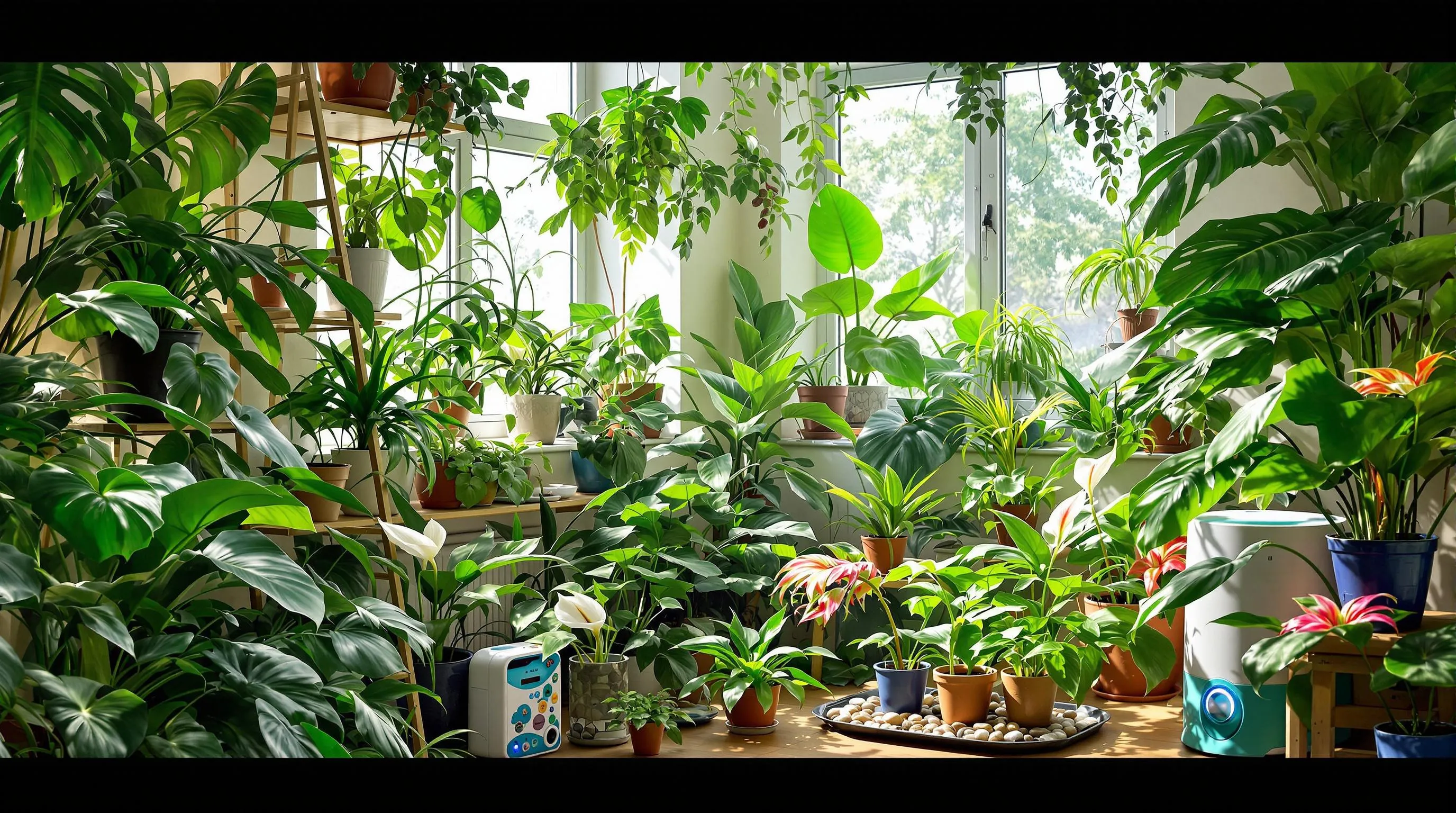
Creating the ideal conditions for tropical plants doesn’t have to be complicated. With a few adjustments to your home environment, you can help these exotic beauties thrive just as they would in their native habitats.
Understanding Humidity Requirements
Tropical plants crave humidity—it’s essential for their survival. Most houseplant varieties need 50-60% humidity, while some demand up to 80%. You can increase moisture levels by grouping plants together, which naturally creates a more humid microclimate. Pebble trays filled with water placed beneath pots provide continuous evaporation that benefits your plants. For more consistent results, invest in a small humidifier to place near your tropical collection. Misting leaves can help temporarily, but doesn’t provide the sustained humidity these plants need. In bathrooms and kitchens where humidity naturally runs higher, plants like ferns, calathea, and peace lilies will flourish without additional effort on your part.
Mastering Light Conditions
Light requirements vary significantly among tropical plants, but understanding their needs is crucial for success. Most tropical varieties evolved under forest canopies and prefer bright, indirect light rather than harsh direct sun. Place plants like monstera and philodendron 3-6 feet from east or west-facing windows for optimal growth. For flowering tropicals such as anthurium and orchids, provide more light—within 1-3 feet of windows—but filter direct sunlight through sheer curtains to prevent leaf burn. Lower light tolerant options include ZZ plants and parlor palms, which can thrive 6-10 feet from light sources. If natural light is limited, supplement with grow lights positioned 12-18 inches above plants for 12-14 hours daily. Remember to rotate your plants quarterly to ensure even growth and prevent them from permanently leaning toward light sources.
Bird of Paradise: A Majestic Statement Plant
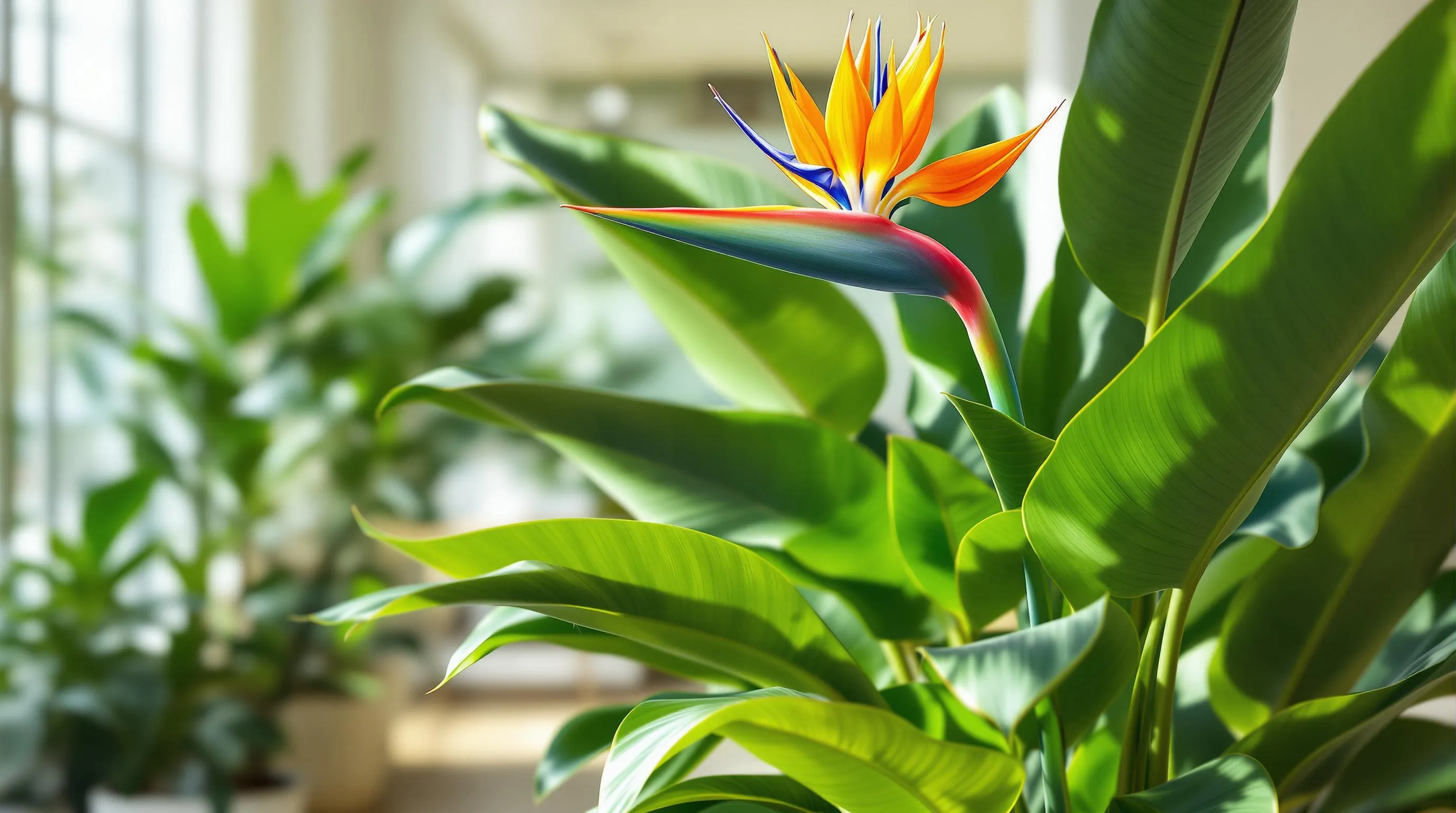
The Bird of Paradise (Strelitzia) makes an unforgettable impression with its large, paddle-shaped leaves and exotic, bird-like flowers that resemble a tropical bird’s colorful plumage. This striking plant can grow up to 6 feet tall indoors, creating a dramatic focal point in any room. Native to South Africa, it’s become increasingly popular in home decor for its architectural presence and relatively straightforward care requirements.
To keep your Bird of Paradise thriving, place it in bright, indirect sunlight—south or west-facing windows work best. Water thoroughly when the top 2 inches of soil feel dry, typically every 1-2 weeks, reducing frequency in winter. Maintain temperatures between 65-80°F and boost humidity by misting regularly or using a pebble tray. Feed monthly during growing season with balanced liquid fertilizer diluted to half strength. While patient growers might see flowers after 3-5 years of maturity, even without blooms, this tropical beauty offers stunning foliage that instantly elevates your space with its bold, tropical aesthetic.
Monstera Deliciosa: The Swiss Cheese Plant

The Monstera deliciosa, commonly known as the Swiss Cheese Plant, has become an Instagram favorite with its distinctive perforated leaves. This tropical stunner makes a bold statement in any indoor space while being surprisingly adaptable to various home environments.
Monstera deliciosa thrives in bright, indirect light but tolerates medium light conditions as well. Position it near an east or north-facing window for optimal growth, or a few feet away from southern exposure. These plants prefer temperatures between 65-85°F (18-29°C) and enjoy moderate humidity levels of 40-60%. Water your Monstera when the top 2-3 inches of soil feels dry, typically every 1-2 weeks depending on your home environment.
The unique fenestrated leaves develop as the plant matures, with young plants displaying solid heart-shaped foliage before developing their characteristic “holes.” Growing up to 10 feet tall indoors, Monsteras benefit from a moss pole or trellis to support their natural climbing habit. Use a well-draining potting mix enriched with peat moss and perlite to prevent root rot.
Propagation and Maintenance Guide
Propagating Monstera deliciosa is remarkably simple through stem cuttings. Select a stem with at least one node and one leaf, cut just below the node, and place it in water or moist soil. Water propagation lets you monitor root development, with new roots typically appearing within 2-3 weeks. Once roots reach 2-4 inches long, transfer to soil. For maintenance, dust the large leaves monthly to maximize photosynthesis and prune occasionally to control size and remove yellowing foliage. Repot your Monstera every 2-3 years or when roots begin circling the pot. Watch for common pests like spider mites and scale insects, treating promptly with insecticidal soap or neem oil if detected.
Colorful Crotons: Adding Vibrant Foliage to Your Space
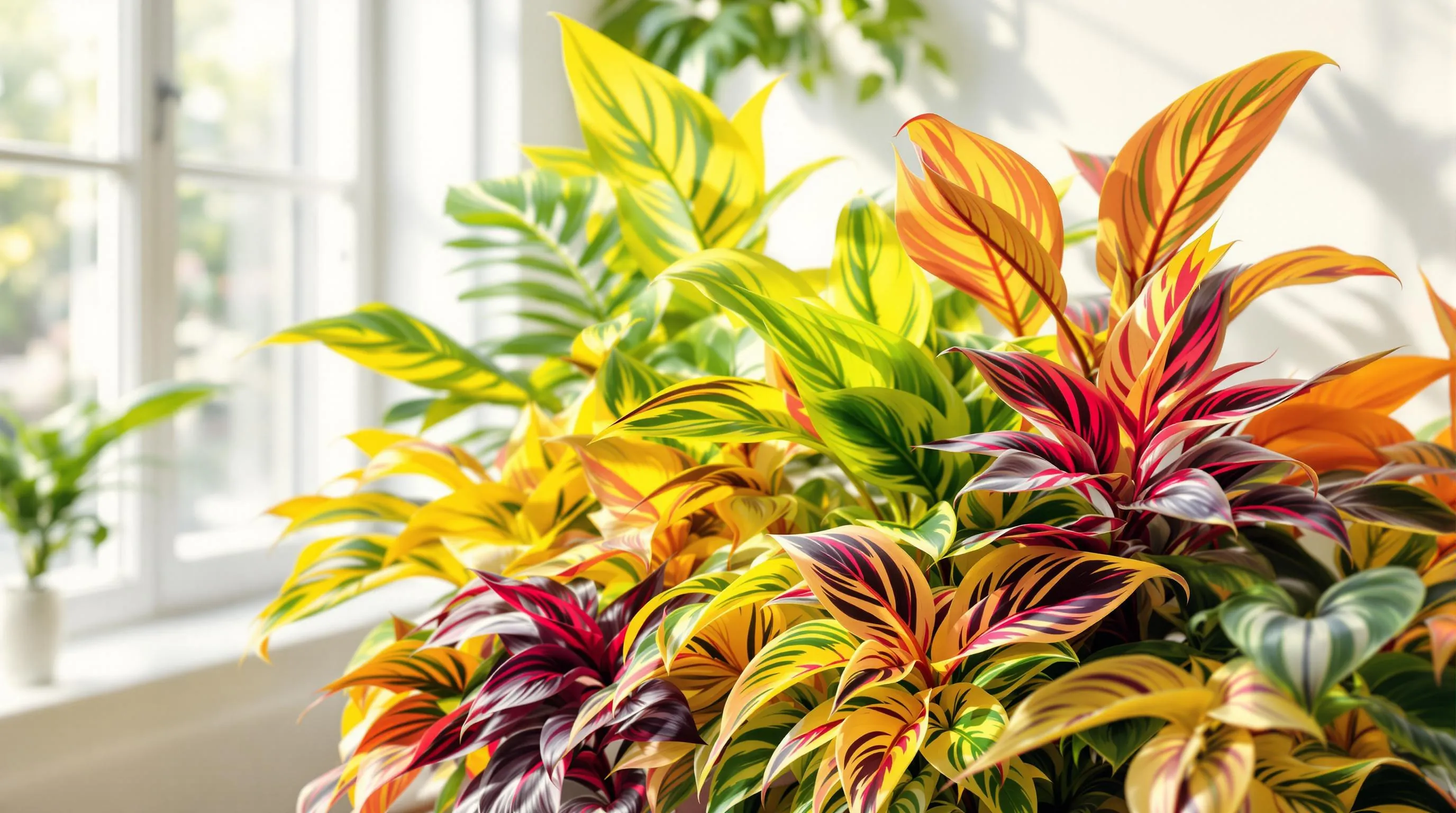
Crotons (Codiaeum variegatum) are among the most striking tropical plants you can grow, featuring leaves splashed with vibrant yellows, oranges, reds, and purples. These eye-catching plants bring a burst of color to any space, even without flowers.
Varieties and Color Combinations
Crotons come in over 100 varieties, each offering unique leaf shapes and color patterns. Popular varieties include Petra with its broad, multicolored leaves featuring yellow, orange, and red veins; Gold Dust displaying small green leaves speckled with bright yellow spots; and Mammy with its twisted, curly leaves in rich burgundy and gold tones. The Zanzibar variety showcases thin, elongated leaves with dramatic color transitions, while Excellence presents wide leaves with stunning yellow and red patterns. For the most vibrant colors, place your croton in bright, indirect light—lower light conditions will cause colors to fade and new growth to appear greener. Most crotons thrive in temperatures between 65-85°F (18-29°C) and require moderate to high humidity levels of 40-60%. Water your croton when the top inch of soil feels dry, and mist occasionally to maintain humidity and keep those remarkable colors shining.
Peace Lily: An Elegant Air-Purifying Tropical
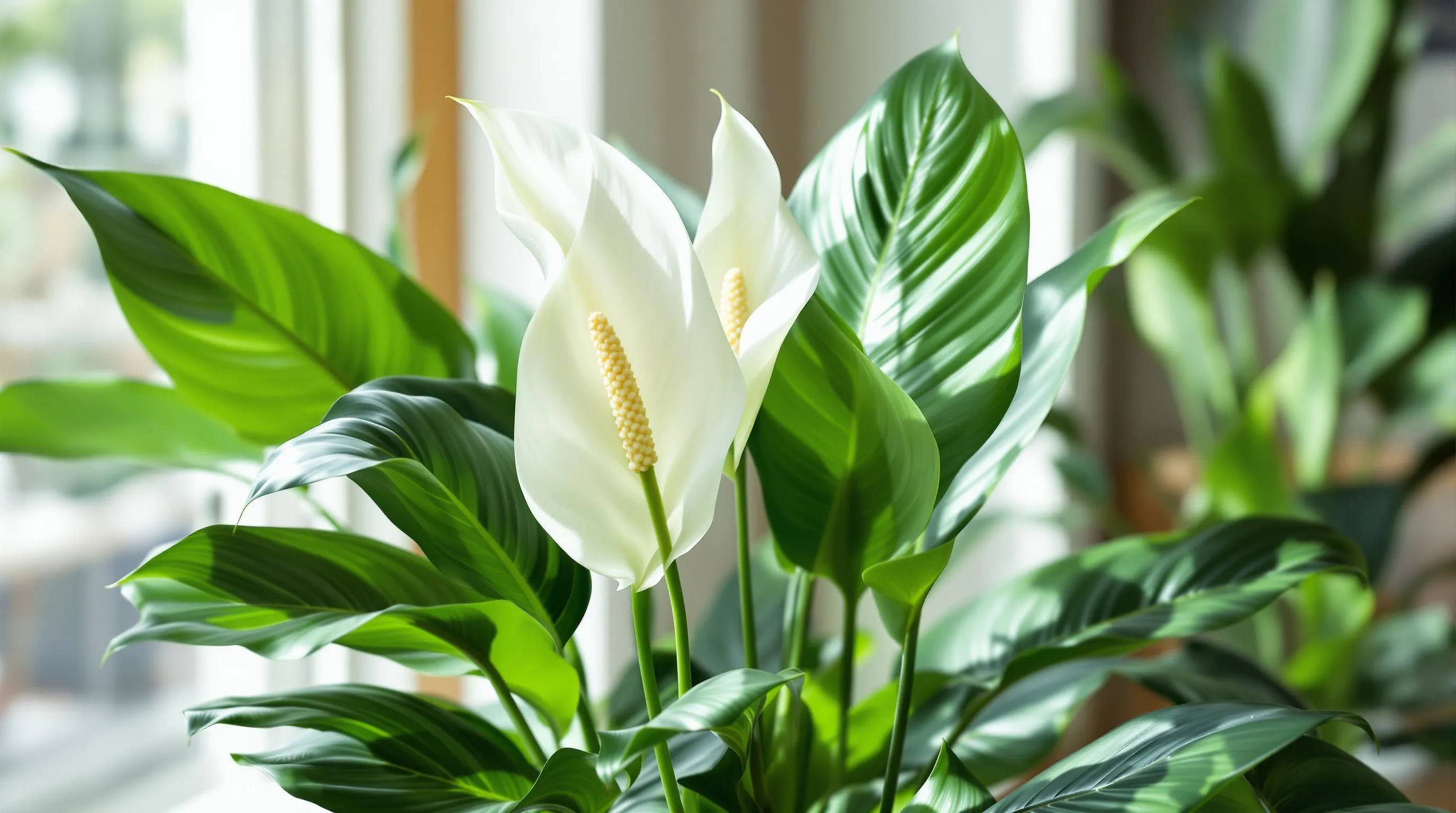
The Peace Lily (Spathiphyllum) stands out as one of the most adaptable and beautiful tropical houseplants you can grow. With its glossy dark green leaves and distinctive white “flowers” (actually modified leaves called spathes), this tropical beauty adds elegance to any indoor space while actively cleaning the air.
Peace Lilies thrive in medium to low light conditions, making them perfect for homes with limited natural sunlight. They prefer temperatures between 65-85°F (18-29°C) and appreciate consistent moisture without becoming waterlogged. For best results, water when the top inch of soil feels dry and mist occasionally to maintain humidity levels of 40-60%.
These remarkable plants are known for their air-purifying abilities, effectively removing toxins like benzene, formaldehyde, and trichloroethylene from your indoor environment according to NASA’s Clean Air Study. A mature Peace Lily can grow 1-4 feet tall depending on the variety, with popular options including ‘Mauna Loa’, ‘Domino’, and ‘Sensation’.
Troubleshooting Common Peace Lily Problems
Peace Lilies communicate their needs clearly through visible signs. Drooping leaves typically indicate thirst—simply water thoroughly and watch your plant perk up within hours. Brown leaf tips often signal low humidity or excess fertilizer, so increase misting and flush the soil with water if needed. Yellow leaves usually result from overwatering or insufficient light—adjust your care routine by allowing the soil to dry slightly between waterings and ensuring adequate indirect light. If your Peace Lily isn’t flowering, it likely needs more bright, indirect light. For pest issues, isolate affected plants immediately and treat with neem oil or insecticidal soap, focusing on leaf undersides where pests commonly hide.
Orchids: Exotic Blooms for Indoor Gardens
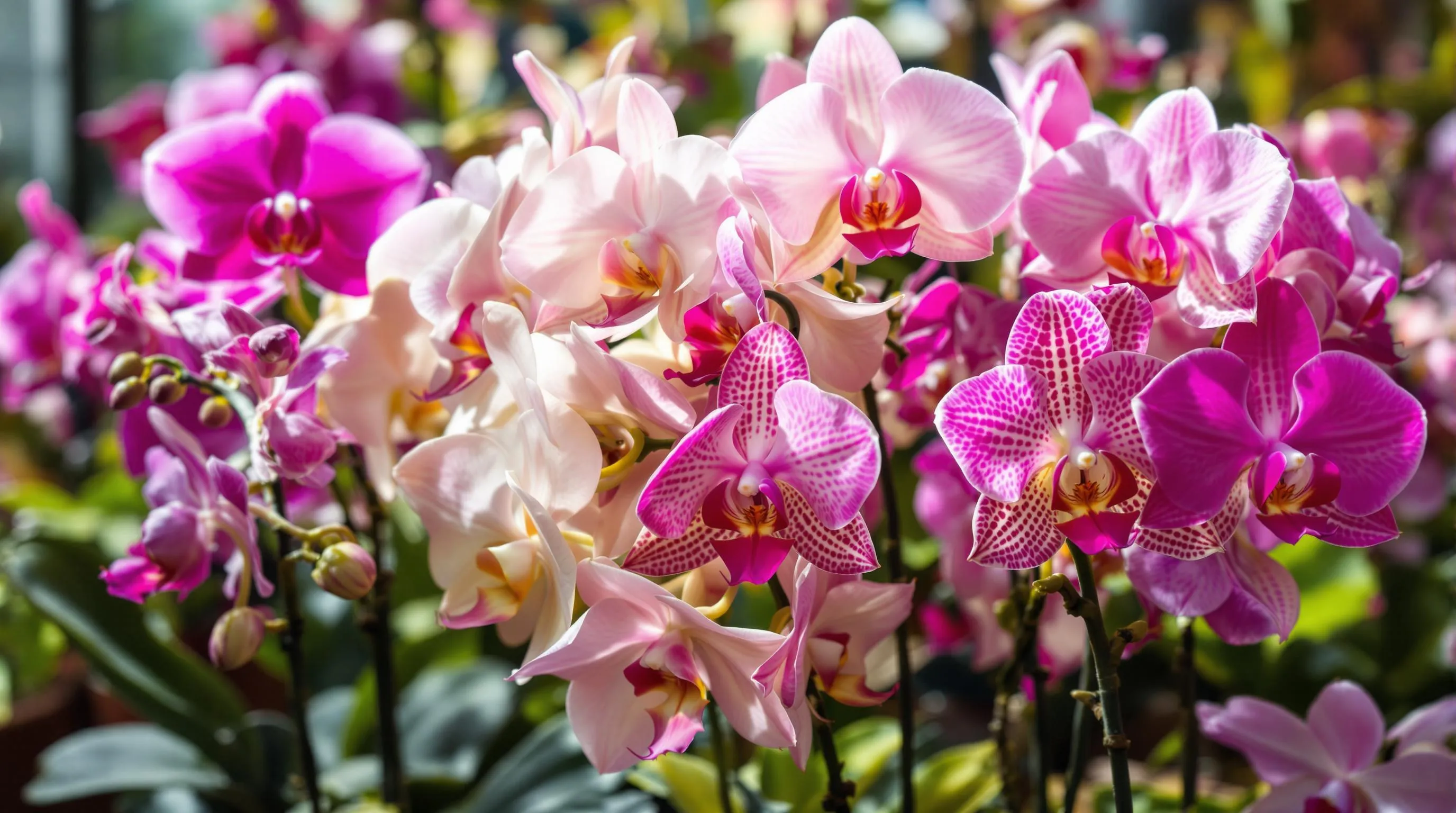
Orchids represent the perfect blend of elegance and exoticism for your indoor tropical garden. With over 28,000 species worldwide, these flowering plants offer incredible diversity in colors, patterns, and growing habits. Even though their reputation for being finicky, several orchid varieties are surprisingly beginner-friendly and can thrive in typical home environments.
Types of Orchids for Beginners
Phalaenopsis (Moth Orchids) are your best starting point with their long-lasting blooms and minimal care requirements. They thrive in bright, indirect light and only need watering once the potting medium feels dry. Dendrobium orchids offer stunning cascades of flowers and adapt well to indoor conditions, preferring slightly cooler temperatures at night. For something truly low-maintenance, try Paphiopedilum (Lady’s Slipper Orchids), which can bloom even in lower light conditions. Oncidium orchids, known as “Dancing Ladies,” produce sprays of small, vibrant flowers and tolerate average home humidity levels. These beginner-friendly varieties typically bloom 1-2 times per year and can flower for 2-3 months when properly cared for, giving you maximum enjoyment with minimal effort.
Orchid Care Essentials
Successful orchid growing starts with understanding their natural habitat. Most indoor orchids aren’t planted in soil but in specialized orchid mix containing bark, charcoal, and moss. Water your orchids thoroughly but infrequently—typically once every 7-10 days, allowing the mix to dry between waterings. Place them in bright, indirect light, ideally in east or west-facing windows. Maintain temperatures between 65-80°F (18-27°C) during the day with a slight drop at night. Feed your orchids with diluted orchid fertilizer (¼ strength) every other watering during growing seasons. For optimal blooming, many orchids benefit from a temperature drop of 10-15°F at night, which triggers their natural flowering response.
Troubleshooting Common Orchid Problems
Yellow leaves on your orchid typically indicate overwatering—the most common mistake new orchid owners make. Adjust by allowing the potting medium to dry completely between waterings. If your orchid refuses to bloom, it might need more light or a temperature differential between day and night. Wrinkled leaves signal dehydration, requiring more frequent watering or higher humidity. Root rot, appearing as brown, mushy roots, means you’ll need to repot in fresh medium after trimming away damaged roots. For pest issues like aphids or mealybugs, isolate the affected plant and treat with insecticidal soap or neem oil. With proper identification of these common problems, you’ll keep your exotic blooms flourishing year after year.
Bromeliads: Long-Lasting Tropical Color
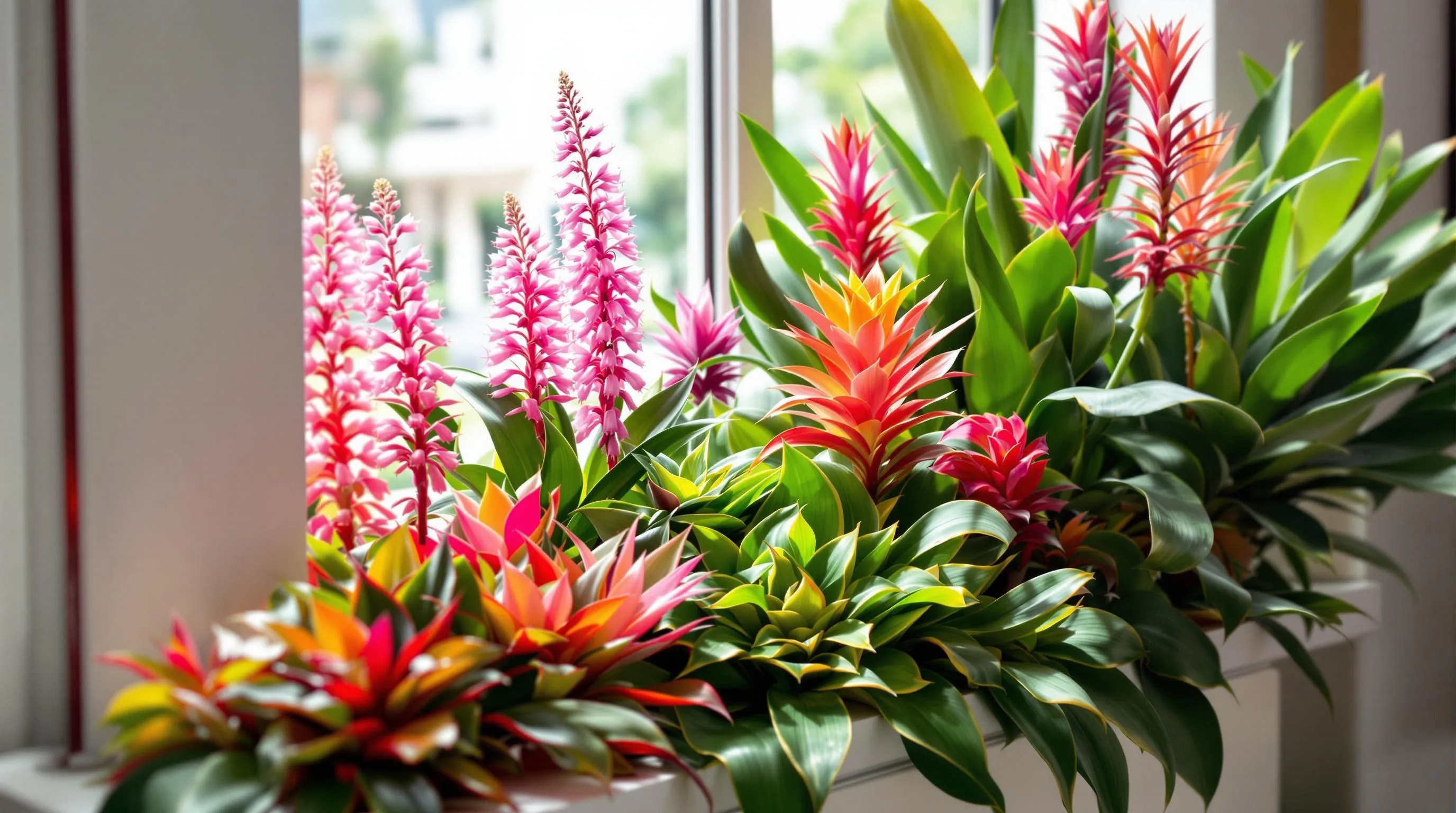
Bromeliads stand out among tropical plants with their spectacular, long-lasting blooms and striking foliage that can brighten any indoor space for months. These versatile plants come in over 3,000 species with diverse colors and patterns, from the vibrant pink quills of Aechmea to the fiery red bracts of Guzmania. Unlike many flowering houseplants, bromeliads maintain their colorful display for 3-6 months, making them an excellent investment for year-round tropical vibrancy.
Varieties Worth Growing
The Aechmea fasciata (Silver Vase Plant) features striking pink flower spikes emerging from rosettes of silver-banded leaves, creating a dramatic focal point in any room. Guzmania varieties offer brilliant red, orange, or yellow flower bracts that resemble flames rising from dark green foliage, perfect for adding a pop of color to office desks or coffee tables. Neoregelia cultivars, commonly called “Blushing Bromeliads,” develop vibrant centers in shades of red, pink, or purple when exposed to adequate light, making them ideal for bright windowsills. The unique Tillandsia (Air Plants) require no soil and can be displayed in glass terrariums, mounted on driftwood, or arranged in decorative bowls for a modern tropical touch.
Light and Temperature Needs
Bromeliads thrive in bright, indirect light that mimics their natural habitat beneath the tropical forest canopy. Position your plants near east or west-facing windows where they’ll receive filtered sunlight for 6-8 hours daily. Most varieties show their best colors when exposed to moderate light levels—too little light results in dull foliage, while direct sun can scorch their leaves. Temperature-wise, bromeliads prefer consistent warmth between 65-80°F (18-27°C) and will suffer damage below 50°F (10°C). Maintain at least 40-60% humidity by grouping plants together, using pebble trays, or running a humidifier during dry winter months to replicate their tropical origins.
Water and Feeding Requirements
Bromeliads have unique watering needs that differ from most houseplants. Water them by filling their central cup (the natural reservoir formed by overlapping leaves) rather than saturating the soil. Empty and refill this cup every 1-2 weeks with room-temperature water to prevent stagnation and bacterial growth. For potted bromeliads, allow the growing medium to dry out between waterings, typically every 2-3 weeks. Feed sparingly with a diluted bromeliad or orchid fertilizer (¼ strength) applied to their foliage just 2-3 times annually during the growing season. Over-fertilizing damages these light feeders, so it’s better to underwater than overwater them.
Propagation and Blooming Cycle
After flowering, bromeliads gradually produce offsets called “pups” at their base—these are the next generation of plants. Wait until these pups reach about one-third the size of the mother plant before carefully separating them with a sharp, sterilized knife. Pot each pup in a well-draining bromeliad mix, and they’ll mature into flowering plants within 1-3 years. While the mother plant will slowly decline after blooming, it can remain attractive for months or even years. To encourage blooming in mature plants, place a ripe apple near the plant in a plastic bag for 2-3 days—the ethylene gas released naturally triggers flowering in many bromeliad varieties.
Fiddle Leaf Fig: The Instagram Favorite
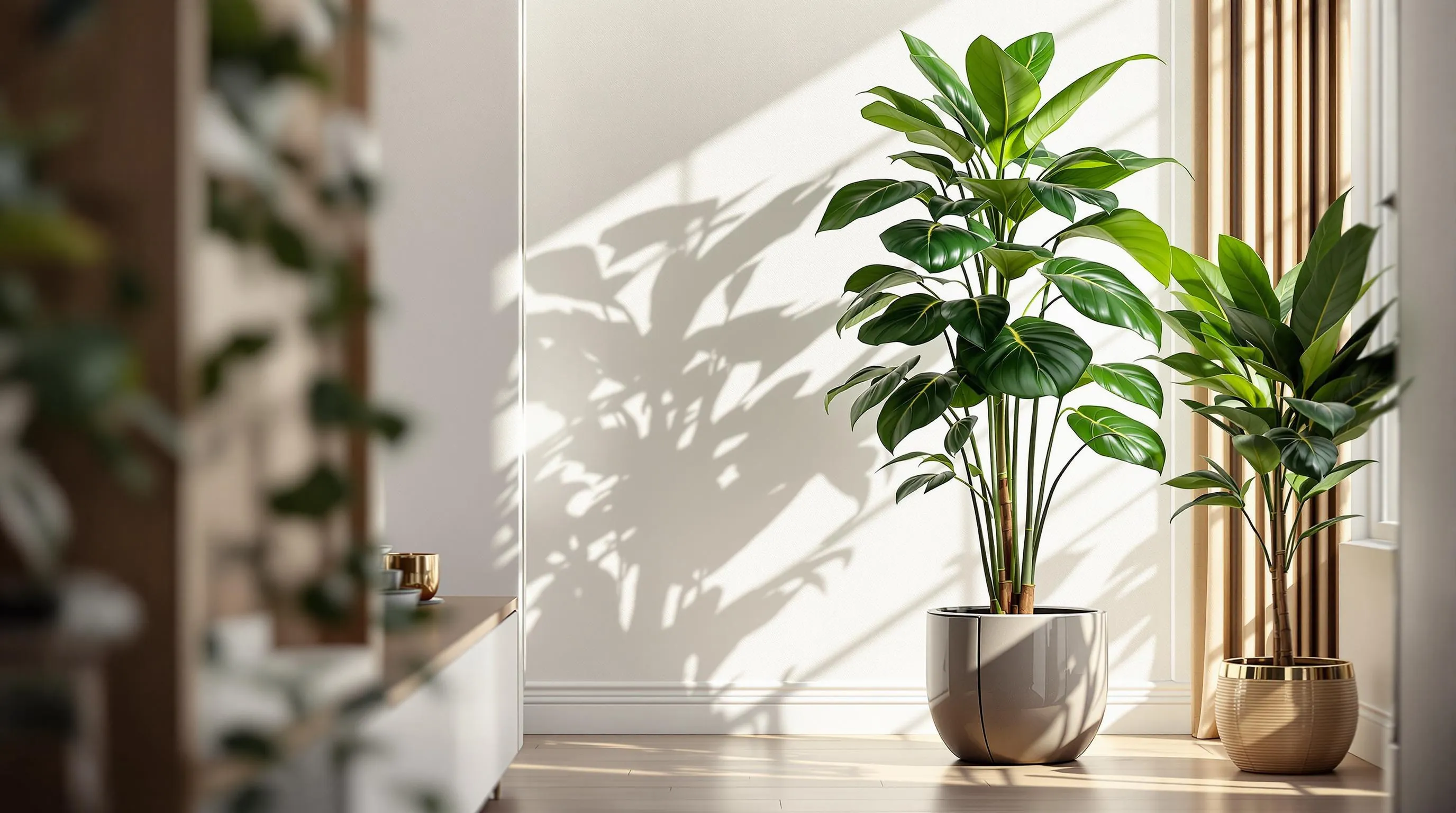
The Fiddle Leaf Fig (Ficus lyrata) has skyrocketed to fame as the ultimate designer houseplant, gracing countless interior design photos and social media feeds. With its large, violin-shaped leaves and sculptural presence, this tropical beauty from western Africa transforms any space into a magazine-worthy setting. Standing 6-10 feet tall indoors, it creates a dramatic focal point that elevates your home’s aesthetic instantly.
Preventing Common Fiddle Leaf Fig Issues
Even though its popularity, the Fiddle Leaf Fig has earned a reputation for being somewhat finicky. To keep yours thriving, maintain consistent conditions—sudden temperature changes, drafts, or relocations can trigger leaf drop. Water only when the top 2 inches of soil feel dry, as both overwatering and underwatering cause brown spots on leaves. For optimal growth, place your plant in bright, indirect light near an east or north-facing window, and rotate it quarterly to ensure even growth. Regularly dust the large leaves with a damp cloth to maximize light absorption and photosynthesis. When brown spots appear, assess your watering routine first—yellow-brown spots typically indicate overwatering, while dark brown edges suggest underwatering. During winter, reduce watering frequency and keep your plant away from heaters and cold drafts that can stress the plant. With consistent care and attention to these common issues, your Fiddle Leaf Fig will remain the stunning centerpiece your Instagram followers admire.
Tropical Palms for Indoor Jungles
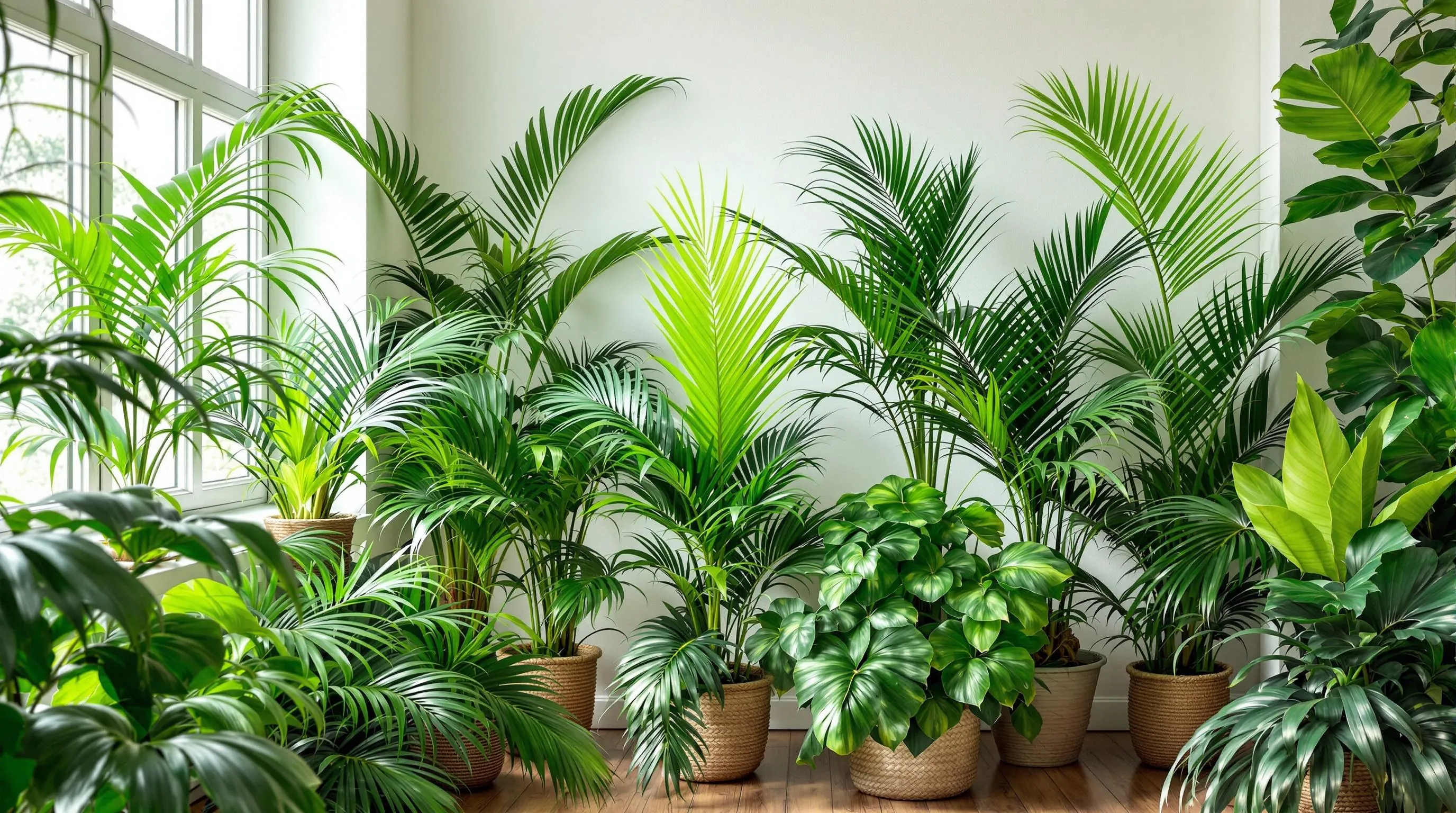
Palms bring an instant tropical feel to any indoor space with their distinctive fronds and architectural presence. These versatile plants can transform your home into an exotic oasis while providing excellent air purification benefits. Here are some spectacular palm varieties that will thrive in different indoor environments:
Best Palm Varieties for Different Spaces
The Areca Palm (Dypsis lutescens) works perfectly in bright living areas, growing 6-7 feet tall with feathery yellow-green fronds that create a soft, tropical backdrop. For low-light hallways or offices, try the Parlor Palm (Chamaedorea elegans), which stays compact at 2-4 feet and tolerates neglect while maintaining its lush appearance. The Kentia Palm (Howea forsteriana) thrives in medium-light bedrooms, growing slowly to 10 feet with elegant, arching dark green fronds that won’t drop leaves easily. For bathrooms with high humidity, the Majesty Palm (Ravenea rivularis) flourishes with its majestic, symmetrical fronds reaching 10 feet in ideal conditions. The Pygmy Date Palm (Phoenix roebelenii) fits perfectly on balconies or near sunny windows, growing 6-10 feet with delicate, feathery fronds and an attractive slender trunk. Choose the Chinese Fan Palm (Livistona chinensis) for statement areas like entryways, as its distinctive star-shaped fronds can spread 3-4 feet wide while the plant reaches heights of 10-15 feet indoors.
Essential Care Tips for All Tropical Plants
Embracing tropical plants in your home isn’t just a trend—it’s a lifestyle choice that brings vibrant energy and natural beauty to your spaces. Whether you’re drawn to the dramatic leaves of a Monstera the colorful foliage of Crotons or the elegant flowers of Peace Lilies these exotic beauties can thrive under your care.
Remember that most tropical plants share common needs: consistent warmth bright indirect light and higher humidity than typical houseplants. Start with beginner-friendly options like ZZ Plants or Parlor Palms before advancing to more demanding varieties.
The reward for your efforts? A stunning indoor paradise that purifies your air boosts your mood and connects you to nature year-round. Your tropical plant journey is just beginning—enjoy watching your collection grow and transform your home into a lush sanctuary.

